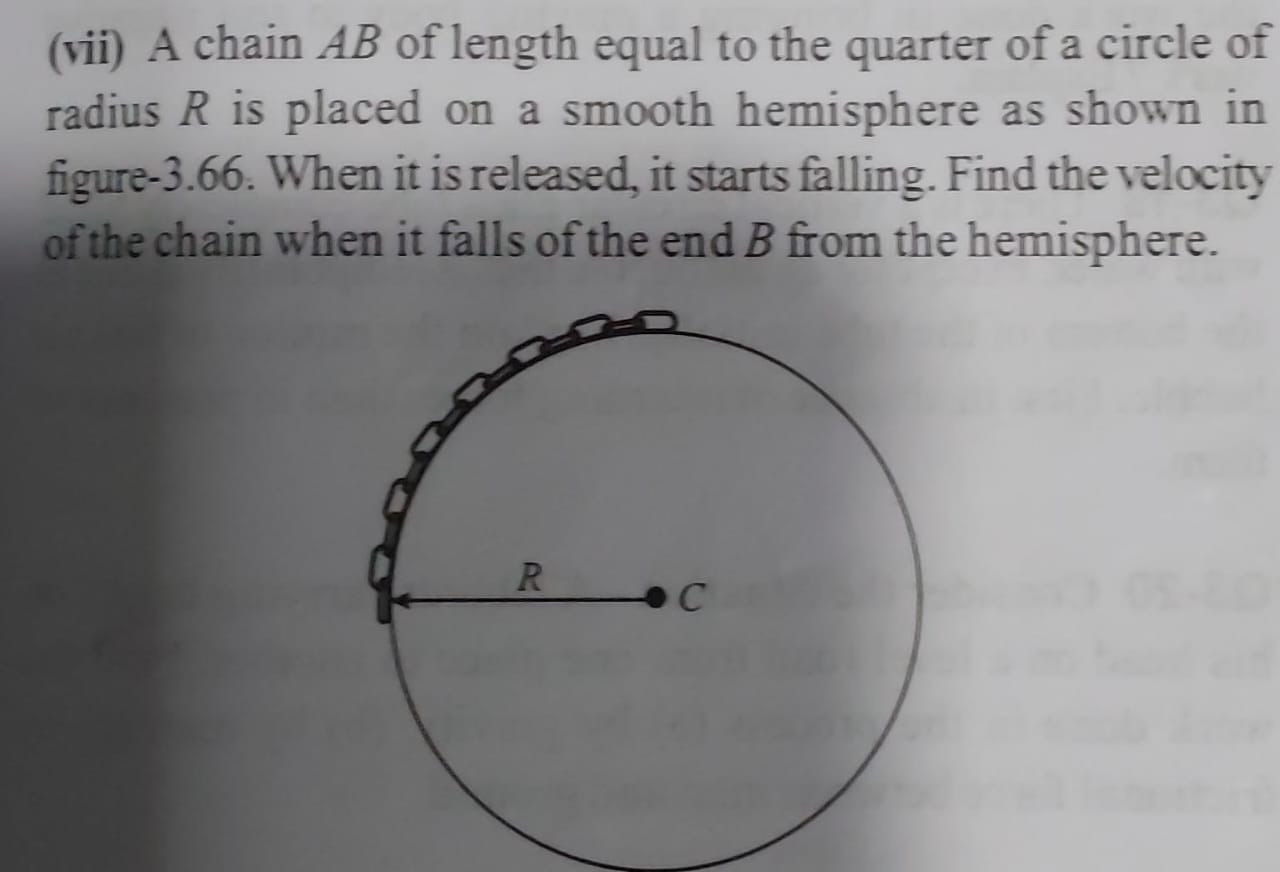Question
Question: A chain $AB$ of length equal to the quarter of a circle of radius $R$ is placed on a smooth hemisphe...
A chain AB of length equal to the quarter of a circle of radius R is placed on a smooth hemisphere as shown in figure-3.66. When it is released, it starts falling. Find the velocity of the chain when it falls of the end B from the hemisphere.

2πgR
Solution
The problem can be solved using the principle of conservation of mechanical energy, as the hemisphere is smooth. Let the total mass of the chain be M and its length be L. Given that the length of the chain is a quarter of a circle of radius R, we have L=41(2πR)=2πR.
We choose the horizontal plane passing through the center of the hemisphere (C) as the reference level for potential energy (h=0). Let θ be the angle measured from the vertical axis passing through C. The height of an element of the chain at angle θ is h=Rcosθ.
The linear mass density of the chain is λ=LM=πR/2M=πR2M. A small element of the chain of length dl=Rdθ has mass dm=λdl=πR2MRdθ=π2Mdθ.
Initial State: The chain is placed on the hemisphere. The figure shows the chain starting from the top of the hemisphere (zenith, θ=0) and extending along the arc to point B, which is at an angle θ=π/2 from the zenith. Thus, the chain covers the angular range from θ=0 to θ=π/2. The chain is released from rest, so its initial kinetic energy Ki=0. The initial potential energy Ui is calculated by integrating the potential energy of each element: Ui=∫0π/2dm⋅g⋅h=∫0π/2(π2Mdθ)g(Rcosθ) Ui=π2MgR∫0π/2cosθdθ=π2MgR[sinθ]0π/2 Ui=π2MgR(sin(π/2)−sin(0))=π2MgR(1−0)=π2MgR.
Final State: The problem asks for the velocity of the chain when it falls off the end B from the hemisphere. This implies that the entire chain has detached from the hemisphere. We assume that at this point, the entire chain has fallen to the reference level (h=0). Therefore, the final potential energy Uf=0. The final kinetic energy of the chain is Kf=21Mv2, where v is the velocity of the chain.
Conservation of Mechanical Energy: Ki+Ui=Kf+Uf 0+π2MgR=21Mv2+0 21Mv2=π2MgR v2=π4gR v=π4gR=2πgR.
